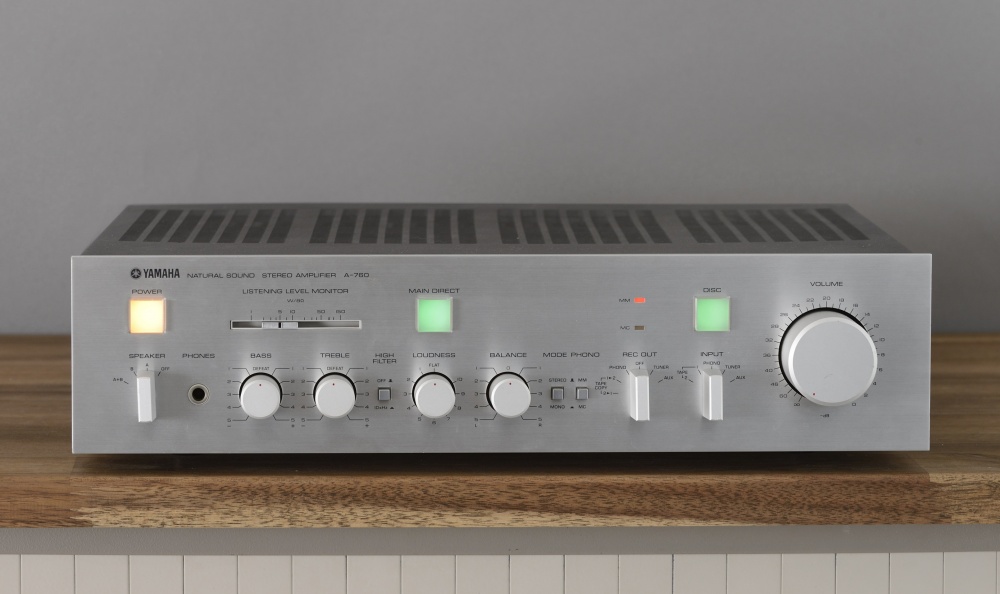Yamaha A-760
Data
General
- Manufacturer: Yamaha
- Model: A-760
- Years of manufacture: 1980 - 1982
- Type: Integrated amplifier
- Remote control: No
- Power consumption: 520 watts (X power supply !)
- Dimensions: 435 x 112 x 365 mm (W x H x D)
- Weight: 9,1 kg
- Color: front silver, housing black, later silver
- Original price approx.: 1000,- DM
Connections
- Number of inputs:
- Phono (MM/MC), Tuner, Aux, 2x Tape.
- Number of outputs:
- 2xspeaker, 2xRec-Out, headphone
Technical Data
- Continuous power (at distortion factor)
- 8 Ohm: 2x 80 / 100 Watt (0,01 / 1 %)
- 4 Ohm: 2x 150 Watt
- Dynamic power
- 8 Ohm:
- 4 Ohm:
- Total harmonic distortion: 0.01%
- Total intermodulation: 0,002%
- Attenuation factor: 55
- Input (Sensitivity/Impedance)
- Phono MM 2.5mV/47 KOhm, MC 250µV/100 Ohm
- Tape, Tuner, 150mV/47 KOhm
- Output (level/impedance)
- Rec-Out 150mV/550 Ohm
- Frequency response:
- 10-50000 Hz
- 20-20000 Hz (+0/-2 dB)
- Tone control:
- Bass: Yes
- Treble: Yes
- Loudness: Adjustable
- Subsonic: Fixed with Phono
- Mute: No
- Direct/Line-Straight: Main-Direct and Disc-Direct
- Ripple (shorted):
- Stereo Channel Separation:
- Signal-to-noise ratio:
- 103 dB (Tuner/AUX)
- 98 dB (MM)
- 76 dB (MC)
Special Features
- Mono/Stereo switchable
- High-Filter
- Record selector
- Listening level monitor
Comments
Other models in the same series:
Predecessor model:
Successor model:
Japan version was called the A-6
Pictures
Reviews
The unit was tested in "Audio" magazine January 1982 (with 3 other amplifiers) and scored best based on Phono-MM input source. Only for Phono MovingCoil input source the Pioneer A-6 was slightly better.
In the Funkschau 3/1981 a report about the amplifier and the technology of the X power supply was published by the then Yamaha service manager Gernot Osburg.
This Yamaha model was affected by the problem of the bursting of a Rifa interference suppression capacitor in the power supply and was modified by Yamaha free of charge in a recall campaign in 2007 (now Wima interference suppression capacitor). On my device the damage occurred only in 2018, so 37 years after purchase: Yamaha nevertheless took over the free repair ! Here the customer is still highly respected !


